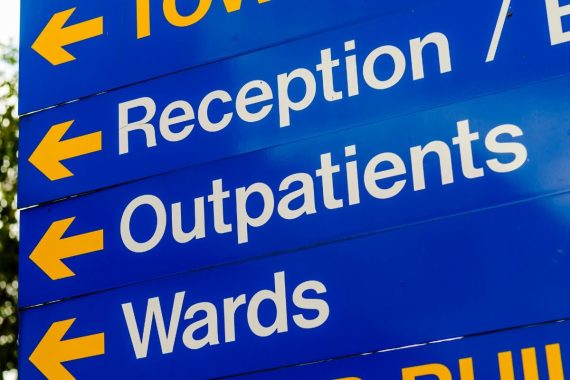Increased use of the independent sector to drive down waiting times is having a ‘limited impact’ on NHS backlogs, a major think tank has said.
A report published by the Health Foundation concluded that greater use of the independent sector providers (ISPs) is ‘no substitute’ for addressing wider issues such as staff shortages, social care and underfunding.
Analysis by the foundation examined the use of ISPs in the delivery of NHS-funded ophthalmic and orthopaedic care, two areas where the independent sector’s share of care has grown most.
But it found in ophthalmology, the NHS was treating patients more quickly than the independent sector in November last year.
By comparison in 2018 there was almost no difference with approximately 75% of patients waiting for ophthalmic treatments in England being treated within three months, by the NHS or an ISP.
Charles Tallack, director of data analytics at the Health Foundation said: ‘While it has an important role to play, the independent sector is not a panacea for bringing down waiting lists, despite it being at the heart of the elective recovery plan.’
The waiting list for planned hospital care – which stood at 7.21 million in January – has grown by 58% since just before the start of the pandemic.
To help expand capacity and address this backlog the NHS has been looking to ISPs to treat more NHS patients.
NHS performance bounced back in 2021 and 2022, but the independent sector has seen that figure drop to below 60% in 2022.
For orthopaedic care, waiting times have increased across both the NHS and ISPs since 2018, though this has been more pronounced for ISPs, resulting in patients facing similar waits regardless of whether they are being treated by the NHS or an ISP.
The report suggests that while ISPs might be supporting activity levels, much like NHS providers – they are struggling to deliver care quickly and are unlikely to help bring down overall waiting lists.
Mr Tallack added: ‘To truly increase activity and bring down waiting lists, the government must address the major problems facing the NHS – from the lack of an adequate workforce plan to historic under-investment, as well as pressures in social care.’
The study also raised questions about inequalities in access to independent sector delivered NHS care. In ophthalmology, the analysis found that post-pandemic, overall treatment volumes in the most deprived areas were still 1% lower than before the pandemic, while in the richest areas they were 5% higher.
And in both specialities, white patients were consistently more likely to receive NHS-funded care delivered by the independent sector than patients from other ethnic groups.
A Health Foundation report also analysed data from a survey of 9,526 GPs in 10 countries, including 1,010 in the UK, carried out by the Commonwealth Fund.
The report found that UK GPs reported ‘higher levels of emotional distress’ and ‘bigger rises in workload’ than GPs in nearly all other countries, with many considering leaving the profession altogether.
Pulse October survey
Take our July 2025 survey to potentially win £1.000 worth of tokens













